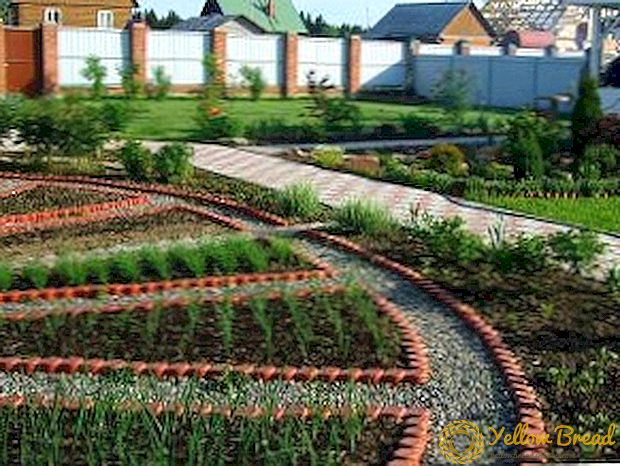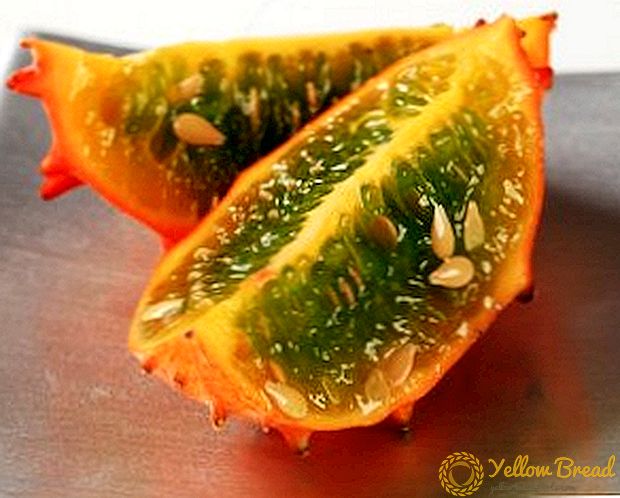 Ficus elastica, which is better known as rubber ficus, is one of the most common pot crops. This plant filters the air, cleans of harmful substances and saturates it with oxygen. In addition, ficus elastica is considered a symbol of the family hearth.
Ficus elastica, which is better known as rubber ficus, is one of the most common pot crops. This plant filters the air, cleans of harmful substances and saturates it with oxygen. In addition, ficus elastica is considered a symbol of the family hearth.
- What should be the soil for rubber plant ficus
- Optimal lighting, temperature and humidity
- Watering rubber ficus
- When you need a feed, and how to do it
- How to correctly trim and arrange the crown of rubber-rubber ficus
- Ficus breeding
- Leaf reproduction
- Reproduction by cuttings
- Plant transplant
Does the rubber plant require special care, how to properly organize a place, and what kind of microclimate is needed for this plant? More about everything below.
What should be the soil for rubber plant ficus
The rubber-plant ficus is not a "capricious" plant. But he also needs to create all the necessary conditions for full development.
 The ficus loves mixed soil, which ideally should consist of 4 components: peat, leaf humus, soddy soil and sand. In flower shops you can buy ready-made mixtures for planting ficuses, and you can prepare it yourself from universal soil and river sand.
The ficus loves mixed soil, which ideally should consist of 4 components: peat, leaf humus, soddy soil and sand. In flower shops you can buy ready-made mixtures for planting ficuses, and you can prepare it yourself from universal soil and river sand.
Optimal lighting, temperature and humidity
In order to decide where to put the rubber plant ficus, you need to know three facts about this plant.
- Direct sunlight is contraindicated for him - the ficus likes bright diffused light.
- The optimum temperature for the plant is 20-25 ° C. In the summer heat, the ficus can withstand up to 30 ° С, and in winter it can stand up to 15 ° С. But to remain in such conditions for a long time the plant can not.
- The elastic loves moderate humidity of air and soil. When there is an excess of moisture, the plant sheds foliage and slowly fades.
Watering rubber ficus
Maintaining moderate soil moisture is one of the most important rules for caring for ficus. The excess of moisture in the pot of ficus rubber prevents the correct formation of the crown and leads to a slow wilt of the rhizome - the heart of the plant. The appearance of red spots on the leaves - a sure sign of glut moisture.
 In summer, water the ficus 1-2 times a week, in winter it is enough and 1 time. In order to check whether the plant needs watering, dip a finger in a pot to a depth of 2-3 cm, if the ground is dry - moisten it. Leaves also need to spray and wipe, but rather to get rid of dust than to moisturize. It is necessary to take note of those who do not know how to make a ficus branch, because this simple procedure helps to increase the number of branches and leaves.
In summer, water the ficus 1-2 times a week, in winter it is enough and 1 time. In order to check whether the plant needs watering, dip a finger in a pot to a depth of 2-3 cm, if the ground is dry - moisten it. Leaves also need to spray and wipe, but rather to get rid of dust than to moisturize. It is necessary to take note of those who do not know how to make a ficus branch, because this simple procedure helps to increase the number of branches and leaves.
When you need a feed, and how to do it
Ficus needs a rich in vitamins and nutrients in the earth, so the "saturation" of the soil is an important part of caring for this indoor plant. Fertilizing the flower should start in April, when the ficus only wakes up after the winter, and stop in September.
You can buy ready-made fertilizers for rubber ficus, but for its full growth you need to alternate between mineral and organic (nitrogen-containing) stimulants. In order not to burn the roots, before dressing the soil must be watered and then fertilized.
How to correctly trim and arrange the crown of rubber-rubber ficus
In order for the ficus to become a lush and branchy bush, it is necessary to prune its branches from time to time. The end of winter - the beginning of spring - the best time to form the crown, but only adult bushes that have reached 50-70 cm are subject to cutting.
 If the ficus stretches up, and you do not know what to do, then just cut off the top of the bush. How much you need to cut to properly form the crown, depends on the height of the ficus. For lower bushes, it is enough to remove 3-4 internodes, for high ones - 5-7. This is quite enough to stimulate the growth of the crown of ficus, the emergence of new branches and young foliage.
If the ficus stretches up, and you do not know what to do, then just cut off the top of the bush. How much you need to cut to properly form the crown, depends on the height of the ficus. For lower bushes, it is enough to remove 3-4 internodes, for high ones - 5-7. This is quite enough to stimulate the growth of the crown of ficus, the emergence of new branches and young foliage.
When caring for rubber plant rubber, you need to know not only how to form a crown, but also how to stimulate the emergence of new side branches.
To make the crown lush and thick in two ways:
Change the position of the stem. So you outwit the plant: the top will become a side branch and will slow down its growth, and the side branch will become a top, and will begin to grow.
Make a hole in the barrel. Using a needle or sewing, make a hole 1/3 the width of the stem. A new process will sprout through this hole.
Ficus breeding
One of the most important skills of a gardener is the ability to properly propagate a flower.
Leaf reproduction
 Ficus elastica is one of the few indoor plants that are hard to grow by this method. The leaf can be put in water, left in a warm place, and it will even give a spine, but, as a rule, it does not go further. To root, ficus need a trunk.
Ficus elastica is one of the few indoor plants that are hard to grow by this method. The leaf can be put in water, left in a warm place, and it will even give a spine, but, as a rule, it does not go further. To root, ficus need a trunk.
Reproduction by cuttings
This method of reproduction of elastic is more effective, but also more labor-intensive.
Ficus rubber has its own reproduction features cuttings, and doing this at home, you must do the following steps:
- Cut the cutting at an angle of 45 ° C.
- Place the cut substitute under a stream of water until it drains all the juice.
- Leave the stalk in water or soil until the root process appears.
- To speed up the process, make a mini-greenhouse - cover the pot with a primer with a film. In order for a germinated cutting to begin, it needs to be treated with “Kornevin” before planting.
Plant transplant
Like most indoor plants, the ficus should be transplanted in the spring or early summer. A new pot should be 3-4 cm wider than before.
 Ficus loves a special soil for transplanting, which includes sand. Lay a drain and some fresh soil on the bottom of the pot. Remove the ficus from the pot with the soil, pre-soak the ground with a flower, and place it in a new container. Add more soil, taking into account the fact that after the first two irrigations the land will noticeably subside. Leave the pot in a warm, humid place, away from direct sunlight.
Ficus loves a special soil for transplanting, which includes sand. Lay a drain and some fresh soil on the bottom of the pot. Remove the ficus from the pot with the soil, pre-soak the ground with a flower, and place it in a new container. Add more soil, taking into account the fact that after the first two irrigations the land will noticeably subside. Leave the pot in a warm, humid place, away from direct sunlight.
Very soon, your ficus will recover after a transplant and go to growth.
Caring for a rubber ficus requires special knowledge, but in general, everything is quite simple. Now you know how to cut a ficus, form a crown, replant and create favorable conditions for the growth and development of a strong plant.






